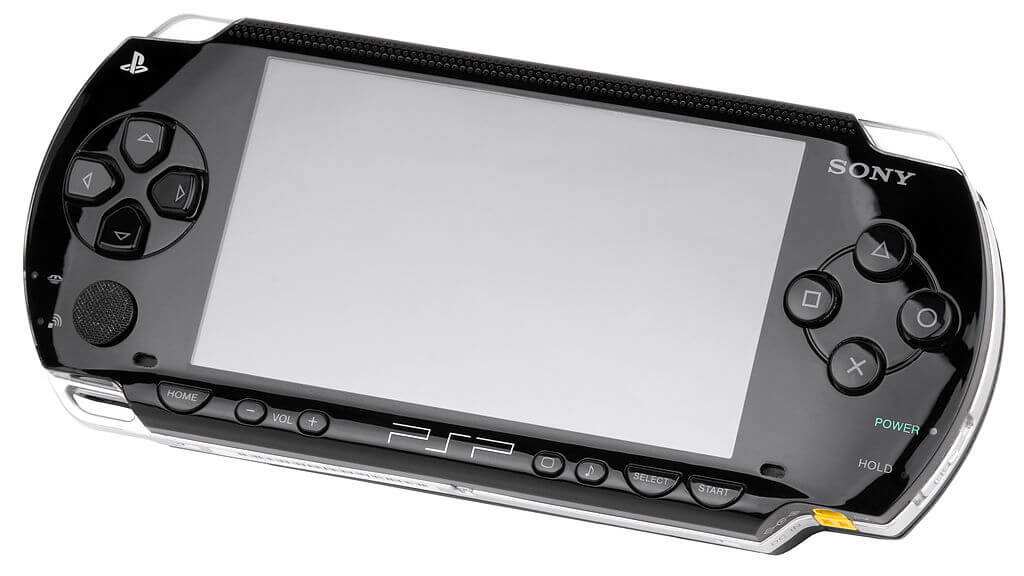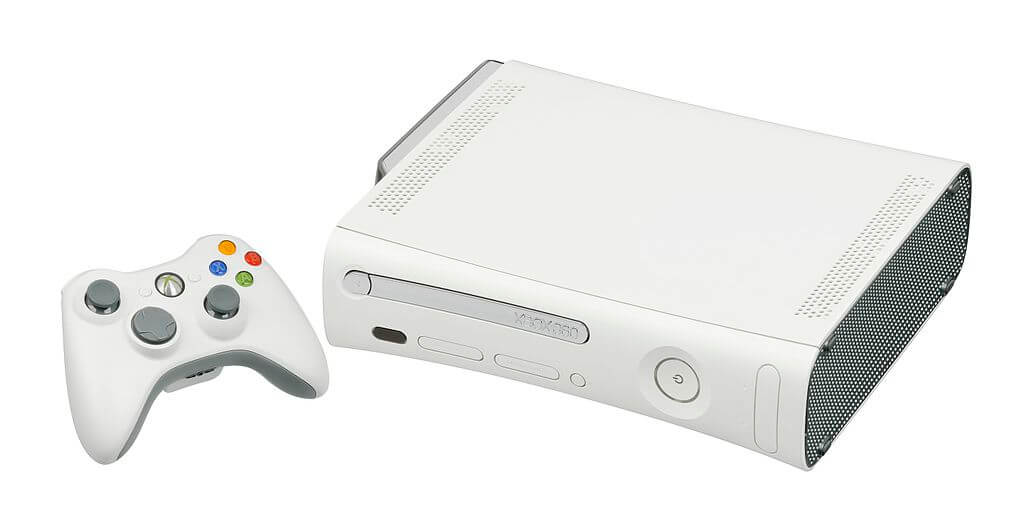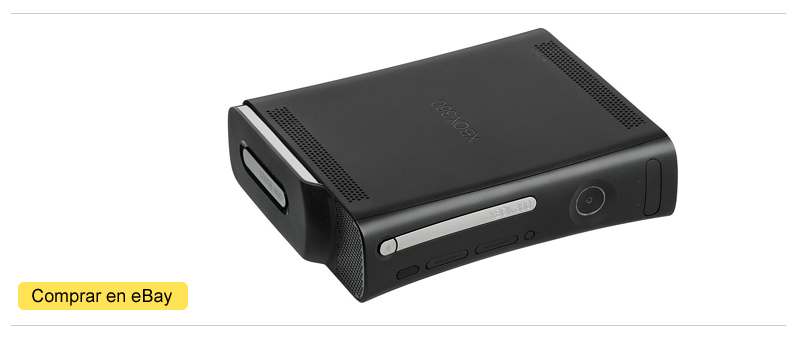The seventh generation of video game consoles, the great battle between Sony and Microsoft that ended up blatantly winning Nintendo’s Wii. The first generation without our longed-for Sega and Sony’s incursion into what, until then, was a reign exclusively for Nintendo, the market for portable consoles, which was joined by more than 10 portable consoles specialized in playing retro video games. A few frenetic years that brought video games to all families, regardless of age or sex. The explosion of video games, the generation that conquered everything.
START DATE: 2004
FIRST CONSOLE: Nintendo DS (2004) – Xbox 360 (2005)
- Consoles of the seventh generation in Infoconsolas.
- The seventh generation of consoles, background.
- The seventh generation of consoles, course.
- The seventh generation of consoles, legacy and consequences.
- The public of the seventh generation of consoles.
- The games of the seventh generation.
- Collect consoles of the seventh generation.
- Buy consoles of the seventh generation.
- FAQ 7th generation consoles
Consoles of the seventh generation in Infoconsolas.
Before entering the analysis, here you have the seventh generation of video game consoles that have been analyzed in Infoconsolas, little by little we will update the analyzes and include new consoles.
The seventh generation of consoles, background.
The sixth generation of video game consoles was a time of drastic changes in the world of video games, the irruption of Sony in the 32 bits with its PS1 in the fifth generation, culminated in the overwhelming success of its next console, the PS2, snatching Nintendo definitively its leadership position in home consoles and liquidating our beloved SEGA and its Dreamcast from the market. Those were years in which Sony consolidated its leadership position by squeezing its console to unsuspected limits, with hundreds of good titles in a huge catalog and enjoying a privileged position when it comes to negotiating exclusivities and flattering release dates for its consoles. .
Sony had done its homework well and was reaping the rewards. Nintendo’s 128-bit strategy was by no means the most ideal, but it was the most traditional: Nintendo launched the Game Cube, a great console more powerful than the PlayStation 2 itself… Period. As it was shown, with the great reputation and followers that Sony had in those years, it was not enough to launch slightly more powerful consoles and later. Gamers had flocked to the “Play” brand, and few would wait to see what Nintendo or other companies had to offer. As if this were not enough, those who had already bought a PS2 would hardly buy another console that could offer them little else in terms of features.
In this way, the Game Cube, a great Nintendo console, went practically unnoticed selling fewer units than the Nintendo 64, even though it had magnificent video games from the Nintendo factory, which increasingly formed its own universe, being the largest Nintendo trick: If you wanted to play Mario Bros, Donkey Kong, Zelda, Metroid or Mario Kart, you had to have a Nintendo console. Only her faithful followed them and a more childish audience followed her. Nintendo was losing its revenue and had to change its strategy completely, it was no longer enough to launch the most powerful console, they had to be creative and even more so when a new competitor entered the scene…
Microsoft and its original Xbox made their appearance practically at the same time that Nintendo took out its console, Microsoft pointed its console to the War of the Consoles, being the spiritual and software heir of our beloved Dreamcast. The Xbox was the most powerful console of the previous generation and the one that introduced the most novelties: a hard drive inside, a PC architecture that is very easy to program, and the Xbox LIVE online service were its best letters of introduction. The Xbox was quite superior to the PlayStation 2, but having come out later, the Sony console had already taken over the market and, furthermore, the programmers got the best out of it, something that made up the technical differences.
But Microsoft had not come to launch a video game console, Microsoft had come to conquer the video game market, and that is not done in a single generation (unless you call yourself Sony and launch the PSX). In this way, the classic Xbox was nothing more than a letter of introduction, a way to show the world what they knew how to do and tell them: “You can trust us with the next generation of consoles.” So it was…
And the portable consoles?
How could it be otherwise since the end of the 80’s, Nintendo continued to be the queen of portable consoles with its 32-bit console, the Game Boy Advance, a console that was NOT ahead of its time, going from 8 bits of the original Game Boy and its pixelated 2D graphics, to luscious 16-bit type graphics. We could say that despite (and thanks to) its 32 bits, the GBA was a Snes 1.5, a console that offered us what it was playing at that time, a generational leap without skipping any generation, 3D graphics and polygons would come Later on, no one demanded them on a laptop, the GBA offered us 2D games on a par with those of the PS1, and let’s remember once again that… We came from the Game Boy and its 8-bit graphics!
Like any great console that has endured over time and with a good number of sales, the Game Boy Advance had two revisions, the Game Boy Micro being the whim that Nintendo gave us all, a small minimalist gem with one of the best screens ever. have never been inserted in a console and a design that delights whoever contemplates it. The Game Boy Micro is beautiful, or rather, as a truly portable console that fits easily in a pocket, the Game Boy Micro is perfect, the best portable console of all time in terms of size/performance. Do you notice that I love it?
The Game Boy Advance have remained in the collective imagination, in the shadow of the great success of its successor launched only 3 years later, but make no mistake, even competing against Nintendo itself, our prized GBA in its three versions sold a whopping 83 million consoles, a real outrage considering that most of his life he fought against his own successor. As you have seen, after so many years people wanted a new Game Boy and the public responded as expected.
Did the Game Boy Advance have competition in its early years? No, not really, we can say that he had attempts at competition. Large consoles such as Bandai’s WonderSwan family of portables and SNK’s Neo Geo Pocket were pigeonholed into a previous generation, with the GBA being much more powerful than both portable consoles. It is true that the GBA rarely squeezed its potential with respect to 3D, but its best 2D games were comparable to those of 32-bit desktop consoles, something very far from the NGP or WonderSwan, consoles clearly with 16-bit features. bits.
Subsequently, three quite interesting proposals appeared on the market in their concept:
- Nokia N-Gage: Console and mobile in a single device, in the years when Nokia was at the forefront of the mobile phone market. A great idea but very poorly executed, it sold approximately 3 million units, being relegated to an anecdotal position.
- Tapwave’s Zodiac: A console destined to fail, based on the hype of its high performance, its high cost, the lack of reputation and trust in the world of consoles, as well as the proximity of future Nintendo and Sony portables, made This console was an absolute failure.
- GP32: Together with the N-Gage, the most interesting proposal, a 32-bit portable console intended in practice for system emulation, the retro came in style and with its own system, quite ahead of its time that marked the way forward for the rest.
The seventh generation of consoles, the explosion of video games.
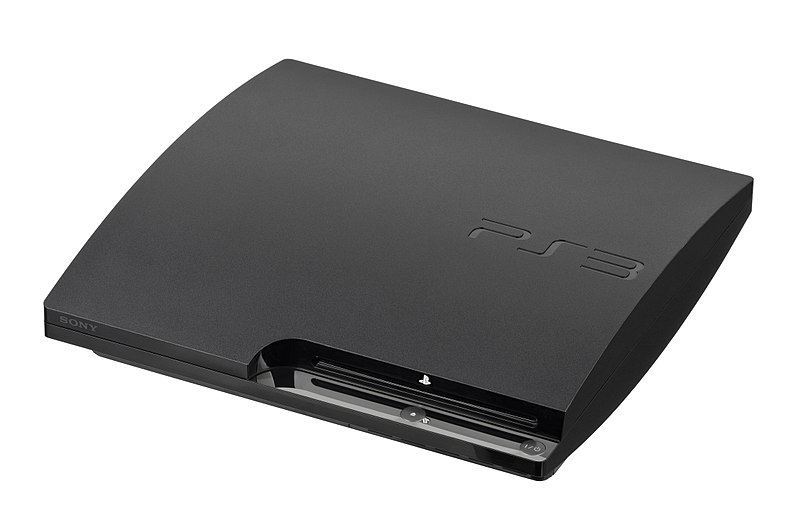
Few people could have predicted a few years earlier what was going to happen in the seventh generation of consoles, with a Nintendo apparently despondent in the domestic market, the excitement in the years and months before the launch of the new consoles was up to Microsoft and Sony: A continuous dance of figures, technical specifications, announcements, information and counterinformation, a battle for the seventh generation of consoles, which began long before the official launches. The HYPE with capital letters was assured, and all the players were gradually positioning themselves for one or another console.
Initially, Sony had an overwhelming advantage, they had the best-selling console in history on the market, but Microsoft had done wonderfully well with the first “announcement console”, the original Xbox, they had launched a quality product and the players did not hesitate that the giant Microsoft was one of the few companies that could put up a fight against Sony’s console because, really, they had already done so in 128 bits. To this great confidence on the part of the American and European market in the North American brand, we had to add all those segueros that had been orphaned, many of whom blamed Sony for their misfortunes, so Sony’s initial advantage was gone shortening by weeks.
But let’s stop along the way, because in this case, in this generation and unlike other times, portable consoles have a transcendental importance to understand what really matters: “The explosion of video games”. So let’s move on in release order on 7th generation consoles, putting handhelds ahead of home consoles, having been released earlier. Let’s remember the two contenders who fought one of the most impressive battles in the history of Video Games, Nintendo and Sony disputing what until now had been the undisputed feud of Nintendo, the portable market:
The war of the portables, Nintendo DS VS Sony PSP
Who was going to tell the veteran Nintendo, that just three years after launching its Game Boy Advance, after a reign of more than a decade with its classic Game Boy, it was going to have to hastily launch a new portable console without amortizing as they were used to the GBA. Who was going to tell Nintendo that another company would dare to enter its once impregnable territories, or rather, who would have imagined seeing the foundations of the red and white fortress tremble before the onslaught of a contender who had been chasing them since the Age of 32 bit…
Sony had lost all respect for Nintendo, not content with humiliating them in the previous two generations of consoles, now they wanted to take over the prized market for portable consoles, the only front in which Nintendo remained a leader. Sony announced with much fanfare its next portable console comparable to a PS2, a real madness if we think that in those years, we were playing Yoshi’s Island from the Snes ported to the GBA. Knowing perfectly the potential of Sony and being aware of the seriousness of the situation, Nintendo prepared to face Sony’s console by bringing forward the launch of its console.
The months and years prior to the launch of both consoles were frantic, both companies jealously guarded the information on their systems, dosing it to make it public at the appropriate time, a chess game, a communication battle between two titans who planned perfectly their advertising campaigns in a few years in which the Internet was already a key factor. The success of both companies in this sense was overwhelming, they managed to make generations of players expectantly analyzing each phrase, each image, each comment from the developers. And best of all, the products they offered were diametrically opposed in concept: Power VS Creativity. let’s check it out
Nintendo DS, the new generation of portable consoles from Nintendo
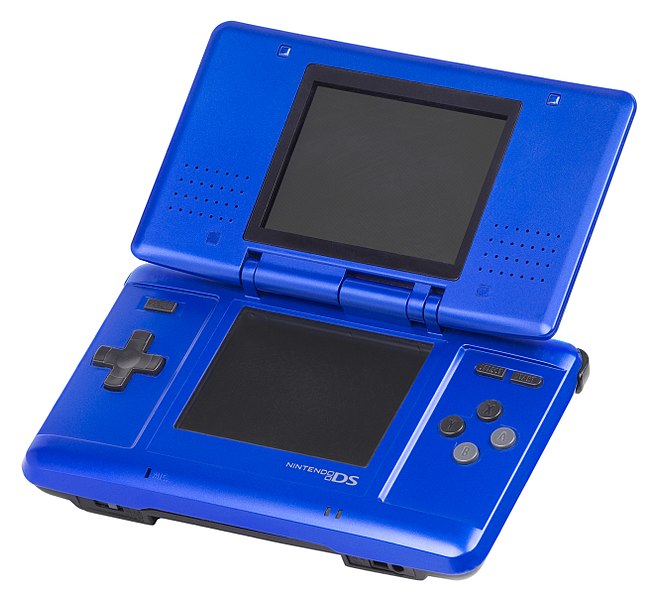
Nintendo had learned its lesson with the N64 and Game Cube, launching a console with superior features was not enough against Sony, the public assumed that SONY would launch the most technologically advanced product, whether it was true or not, and on the other hand, Sony took over the markets with overwhelming speed, nobody expected the proposals of the rest of the companies, not even Nintendo. These were the main initial challenges that the Kyoto company had to overcome so that Sony would not pass them by again.
In November 2004 it is the United States and December 2004 in Japan, just for the Christmas season, for a cheap price of US$149.99. Nintendo did its homework and anticipated the launch of the PSP with a console 100 dollars cheaper, Sony would not take over the market again, the first challenge was achieved, but what console had Nintendo launched? What was your concept? Did it outperform Sony’s beast?
With the Nintendo DS, Nintendo surprised the world with a display of creativity, ingenuity and going back to basics. Nintendo offered us a new line of portable consoles saying goodbye to its famous “Game Boy” brand, the Nintendo DS was a completely original new console, a new concept with an air of nostalgia that transported many of us to the times of recreation and Game & Watch. Just by seeing its aesthetics we were already aware that we were facing something never seen before, a revolution in the world of video games comparable to those experienced decades ago with the implementation of the pad or the portable consoles themselves:
The Nintendo DS was in itself a revolution, it had 2 screens of remarkable quality for the time, a classic upper one and a lower tactile one, these two being key points in the development of its video games and becoming the standard of the console, which provided a new way of playing video games thanks to this new control, the touch. To complement these novelties, the console incorporated a microphone capable of capturing a breath, Wi-Fi connection, backwards compatibility with the GBA and cartridges as the chosen format. And the power? Slightly superior to a Nintendo 64. Nintendo had achieved a balanced console as before in price and performance, but with the addition of creativity: Balanced and creative.
It is very possible that said like this, in a paragraph, all these aspects are not surprising at all many years after its launch, but incorporating these innovations successfully marked a before and after in the video game industry: Nintendo knew how to take advantage of it like no one else , marking the way for the developers, the use of the two screens, the touch screen and the micro. New games and genres unthinkable on previous systems were now possible thanks to the new controls, plus the adaptations made to common PC games (keyboard and mouse). The industry reinvented a hobby, that of video games, which evolved from the crosshead and the 4 classic buttons, to a set of controls that offered many more possibilities, also keeping the original control, of course.
Nintendo had done very well to face Sony and the raw power of its PSP, but knowing that a large part of the players would continue to give priority to graphic power over all other aspects, against which it could not offer what they longed for, the goal was set to reach all those audiences that until then had been oblivious to video games: your niece, your uncle, your mother, your grandmother, your boss, the history teacher, those of the nursing home… And as incredible as it may seem, he succeeded.
Nintendo expanded the video game market to all generations, ages and genders thanks to its Nintendo DS, something for which we should be eternally grateful. Nintendo’s strategy was perfect, thanks to its new controls the NDS was much more than a video game console, with the DS you could paint a picture, talk to your friends, connect to the internet, play sudoku, train your brain, read a comic or graphic novel and take care of your virtual pet. Train your brain and take care of your pet? Yes, the Tetris effect also came to the DS and millions of people with small flats bought the console to take care of their puppies with the Nintendogs, just as millions of older people began to train their brains with Dr. Kawashima’s Brain Training, these two games being two authentic console sellers for all ages and without distinction of sex.
This strategy by Nintendo caught Sony off guard, but it was not especially harmful for the PSP, what Nintendo was doing with its Nintendo DS was good for video games in general, it was expanding the market exponentially and discovering millions of people, that video games were not that thing for children and dolls as they had been told. Nintendo amply won that battle, we’ll tell you. With more than 150 million consoles sold, including the different versions of the console that were released, Nintendo remained the undisputed queen of the seventh generation of portable consoles. Does this mean that the Sony PSP did poorly? No, not at all, as we will see below.
Sony PSP, Sony’s portable console
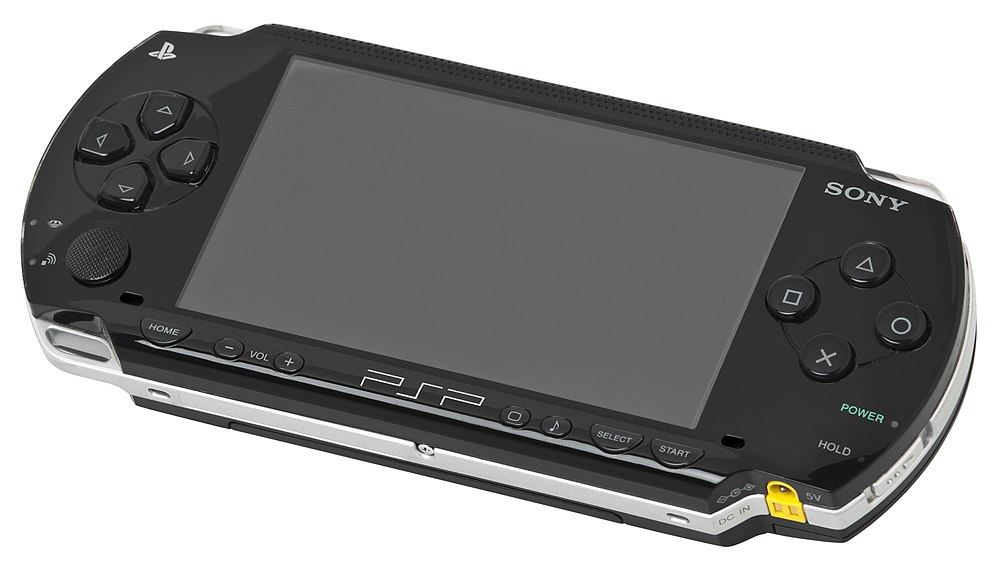
Since the end of the 80’s, Nintendo had dominated the market for portable consoles, being the undisputed leader at all times, many companies had tried with greater or lesser success to confront it, but none of them succeeded. His dominance was such that we players already knew that when other brands published their new laptops, whatever was launched, Nintendo was going to follow its path without practically noticing the appearance of the competition. That’s how it had always been, until Sony announced the launch of its portable consoles…
Sony, the almighty Sony, the company that had eliminated SEGA and relegated Nintendo itself in previous generations, now showed the little respect it had for Mario’s company and dared to conquer its last fiefdom. Betrayal of a tradition, the portable market had always been Nintendo, but Sony was ready to change the landscape again. That Sony launched a portable console was not trivial at all, the creator of the successful PS1 and PS2, had the full confidence of the majority of gamers on the planet, which is no small thing… Possibly, in those years Sony was the only company from all over the world that could take on Nintendo in the handheld market.
Sony’s strategy was simple at a conceptual level: Launch the most powerful and best quality portable console ever made, being comparable to a PS2, something unheard of at the time if we think about the complexity involved. Historically, portables had always been far behind desktop consoles, but the PSP was launched at the height of the PS2, comparing its features with its desktop version, that is, equaling its older sister in practice, something unheard of so far.
In December 2004 Sony launched its PSP in Japan, being launched in 2005 in the United States and Europe. The PSP was a black beast that overflowed with quality on all four sides: Its gigantic backlit LCD screen, its accurate controls, its menu emulating the luxury multimedia PSX, its chosen format, the possibility of watching movies in very good conditions anywhere. A true marvel of console.
Sony released the best console it could make at the time at a price plausible for most adult gamers: $181 and $226 depending on the bundle chosen in Japan, $249 in the US and €249 in Europe. As you can see, the prices fluctuated as always from Japan to the rest of the world due to export costs and the greater number of video games that the Japanese buy later on average, this is something usual, what was not normal was the 100 dollar difference between the Sony PSP and the Nintendo DS, something that played very much in favor of Nintendo.
Seen in perspective, the PSP and Nintendo DS coexisted in parallel, the proposal they made to us was so different that they turned out to be completely compatible consoles, each with its own catalog of video games adapted to its characteristics. The PSP was a success with more than 80 million units sold in its different versions, a real madness if we think that Nintendo sold more than 150 million, but once we saw what both consoles offered us, here there was no classic rivalry like the one of yesteryear, having millions of players both consoles in their possession, the perfect combo.
Sony’s foray into the portable market was perfect, the fact that Nintendo sold more units cannot overshadow Sony’s good work, once again the Japanese company showed that it knew very well what its public wanted, resulting in the PSP a preview of what would come later in the domestic console market.
Many more portable consoles were launched in this generation of consoles, many of which you have analyzed at the end of the article, but commercially speaking, they could not do anything against the two big ones… Of course, the portable consoles focused on emulation, way that started the GP32 in the previous generation of consoles, they emerged like mushrooms with very diverse interesting proposals, consolidating a submarket that had come to stay.
THE BIG BATTLE: Xbox 360, PS3 and Wii.
In the history of video games and more specifically, in the Console War, the battle that was fought in the field of seventh generation home consoles, is probably the most exciting of all battles… Including the epic contests commercials between Nintendo and SEGA.
Sony, which came from a privileged position thanks to its PS1 and PS2, saw how an impetuous Microsoft tried to face it face to face with the same concept, the power and brute force of its circuits. The two proudest nations on the face of the earth met again many decades later, Japan and the United States. As if this were not enough, the coup de grâce that Sony had tried to give Nintendo in what was its waterline, the portable consoles, had not worked, the Nintendo DS was shot with magnificent sales, profits and the worst for Sony left Nintendo more alive than ever and with a new concept that had been proven to be successful, that of creativity.
In this way, Sony would have to defend itself on two fronts and two very different proposals, something practically impossible for a technological product that aims to be affordable for the general public. Microsoft promised all the power in the world while Nintendo assured that its console was going to be revolutionary, the worst thing for Sony is that both kept their promises.
The years before the launch of the new home consoles, the Internet was a new battlefield for fanboys. Each new data, photo and information that was filtered, was analyzed and disclosed to the point of exhaustion. Thousands of websites and blogs dedicated to video games reported the latest developments, moving to the forums in an authentic guerrilla war in which each one defended their choice, without having any viable information in practice.
The hype was abysmal, the communication campaigns of the 3 big video game companies were masterful and the world was waiting expectantly for the launch of the new consoles in an industry that had long ago surpassed others such as music or cinema. 2005 arrived and the first seventh generation home console came out:
Xbox 360 | 85 million units sold.
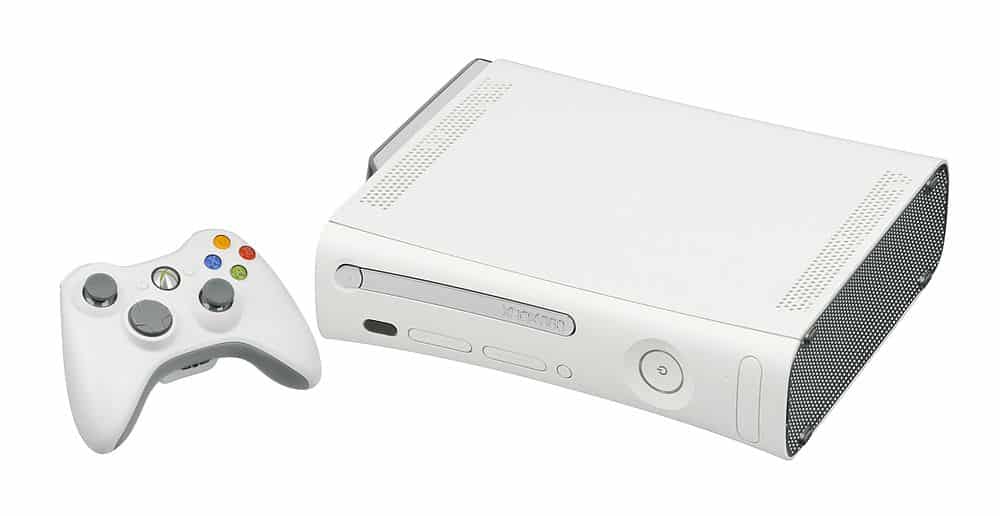
Microsoft launched its Xbox 360 console practically simultaneously throughout the world, November and December 2005. Only with this gesture did it win over many of us, players who had spent a lifetime contemplating launches in Japan and the USA, and then having to wait 1 or 2 years, if the console in question reached us. This simple gesture treated us all equally and more importantly, with respect.
With an initial price of US$299 without a hard drive and US$399 with 20 Gigs, Microsoft launched a very powerful machine with an architecture very similar to that of a PC, with a magnificent online service (the improved XBOX Live) and very easy to program. something that would become evident when many of the multiplatforms would be programmed for the 360 and later ported to the PS3 (with the consequent loss of quality for Sony). The Xbox 360 was a beast capable of everything, in high definition (although initially there was a console without an HDMI output) and ready to put up a fight against the PS3.
Your weak point? The chosen format, the DVD. To cut costs, Microsoft chose the DVD format, while Sony opted for the new Blu-ray Disc, which had much more storage capacity to be able to play movies in 1080, for example. To counteract this fact and provide the Xbox 360 From the possibility of playing movies in HD, Microsoft launched a peripheral to play HD-DVDs, a format that would fall into disuse shortly after the victory of Bl-ray. With regard to video games, this format error had little significance, since the console had a hard drive to install the necessary data, the latter became cheaper and there was always the possibility of launching a game on 3 or 4 DVDs, being cheaper than a single Blu-ray.
The Xbox 360 fulfilled what we had been promised, update after update it offered us new improvements, its exclusive games showed us that it had nothing to envy other systems and the fact that it was launched 1 year before the PS3 and for 100 euros less , gave him a great advantage that, without a doubt, they knew how to take advantage of. Once the PS3 was launched, we could all see that in practice both consoles offered us the same thing, with few exceptions, something very favorable for the cheaper Xbox 360 than its competitor.
I want to clarify and repeat it so that there are no doubts, the PS3 is technically superior to the 360, but the ease of programming on the 360, causing many multis to be programmed for Xbox and ported to PS3, together with the expertise that is achieved regarding programming and squeezing the system itself, made the differences between the two consoles non-existent for the inexperienced player. Still, the Xbox 360 had 2 key aspects throughout its life:
- The three red lights: Many models of the Xbox 360 would overheat and cause the processor to literally melt the pins. Microsoft’s console was a poorly cooled beast. I myself suffered twice…
This would have made any other company fail, but incredibly it reinforced Microsoft’s image as a brand that takes care of its customers: They put in place the best customer service that has ever existed, you called, they came to your house to get the console and They sent you another new or conditioned one, extending the guarantee period. Same with peripherals. No questions, no stories.
Shortly after they improved the problem of overheating, but Microsoft had shown that it was never going to let a customer down, something that later took its toll on Sony in its image, by classifying its video game console as a toy in Europe, so They were only required to give a 1 year warranty. The comparisons were hateful for Sony. wonderful paradox. - Piracy: Yes, the Xbox 360 was a widely pirated console, a fact that, as often happens, greatly favored sales of the console itself to the detriment of video games. Microsoft had to live with this evil based on updates that banned pirates, so many people had the console always disconnected, for fear that an update would “burn” their system. In practice, we repeat, it favored the sales of the console.
The battle with Sony was long and hard, but each small victory for Microsoft was a great defeat for Sony, after all, Sony was defending the castle against a 360 that with all brazenness, managed to equal it in millions of consoles sold. The almighty Sony defeated on its own ground by a novice brand in consoles… What an irony. defeated? Yes, for two reasons:
- The 85 million Xbox 360s that were sold, roughly speaking, are tens of millions of PS3s that stopped being bought, being a direct competition from the same target audience. Yes, I know it’s very general, but stay with the concept, both companies were fighting for the same audience, and Microsoft ate half the cake.
- The “alliance with Nintendo”: Never written, never signed but publicly disclosed. Faced with the imminent arrival of the Nintendo Wii and its revolutionary way of playing not focused on graphics, Microsoft spread the word that the perfect combo for this generation was to have a 360 and a Wii, and they were right… For less than the cost of a 60 gig PS3, you could buy an Xbox 360 and a Wii.
Many of us did it, it was true, the accounts came out and you had two new generation consoles, you didn’t miss anything except some exclusivity, which would fall later on in the future second-hand market. The key here was Microsoft’s humility and strategic vision: What is better to have 1 or 2 enemies? Microsoft devoted all its media resources to confront the PS3, assuming that the Wii played in another league, for another target, it was not direct competition. This move won the approval of many players, including Nintendo Wii users who also wanted to enjoy the power and HD graphics that other consoles offered, their second option would be mostly the Xbox 360.
It is true that they tried to join the bandwagon with the Kinect motion sensor, but except for the great North American living rooms, the accessory made no sense for most of us gamers who wanted a good controller and classic game, for movement it was already the Wii and in the end, it was more smoke than anything else.
For all this I dare that the PS3 was defeated, no matter how good sales it had, the Xbox 360 and Nintendo Wii pairing were able to beat it. But sticking to the 360, Microsoft was able to offer us a magnificent console that lasted more than 10 years with a good commercial life, something on a par with the largest.
PS3 | 87 million units sold
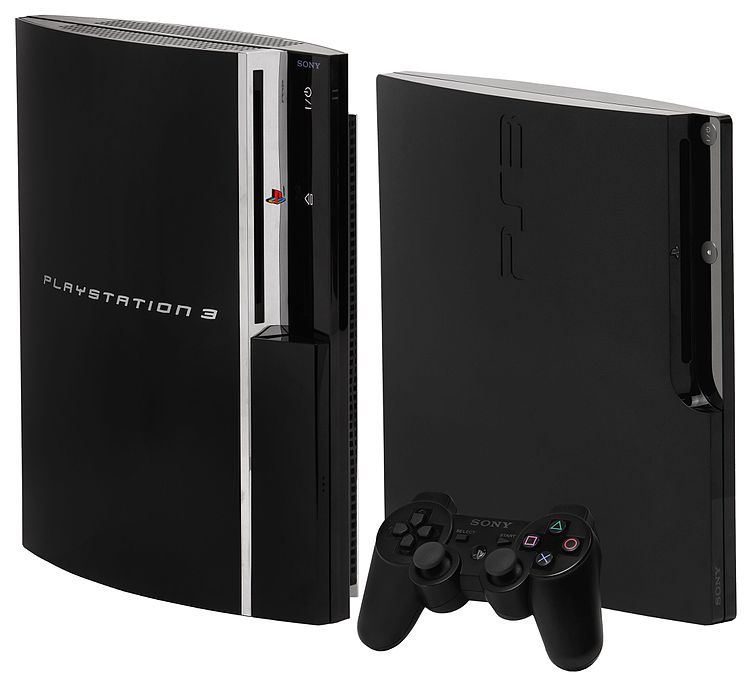
All gamers of the time had no doubt that the PS3 would be the most powerful console of the generation, the only question was whether the Xbox 360 would hold its own and whether Nintendo’s proposal would work. Seen in perspective, the three consoles complied and did their part, but unlike its competitors, Sony was defending the leadership in the video game industry achieved with the PS2, so the demands were much higher for the new PlayStation.
Sony created a machine that could do it all, but at a higher price than its competitors. Even so, buying a Sony console was a guarantee of success, one knew that it was going to have the best video games, exclusives and in this case, just like the strategy followed with the PS2, the PS3 offered us the jump to the cinema in HD with the Blu-ray… Although this time it was not so decisive:
The jump from VHS to DVD offered with the PS2 was giant, from the Pleistocene to the Bronze Age, with the PS3 it was very different, from DVD to Blu-ray Disc there was not such a big difference/impact, apart from needing a TV 16:9 HD, something that many of us still did not have. Consequently, that Blu-ray was a poisoned gift that led us to spend a lot of money on a new TV, something that we all ended up doing for the consoles as well… The important thing is that in practice, the Blu-ray was not a claim as important as Sony expected. Even so, the format was still far superior to that of the Xbox 360 or Wii, so that important advantage was maintained.
Sony launched its console in November 2006 in Japan and the United States, and March 2007 in Europe, an insult to the Europeans who had witnessed how Microsoft did count on them… On the other hand, all those months of advantage for the Xbox were a big mistake, the Xbox 360 had already sold a very good number of units to players impatient for the Next-Gen and as if this were not enough, the release date of the PS3 practically coincided with that of the Nintendo Wii, hopelessly forcing the public to choose between one and the other. They didn’t start as well as expected… But don’t worry, the launch of the PS3 was a success and, as is often the case with well-planned launches, there was more demand than supply.
As we have already mentioned, the PS3 and the Xbox 360 maintained a direct confrontation that made us, the users, enjoy the best games that we could never have imagined in that generation of consoles, authentic works of art and programming that surprised us over and over again, being at the height of the much more powerful PCs of the time. A market of more than 160 million consoles between the two brands was well worth the effort to optimize the titles well.
The PS3 was characterized by offering a quality product, with a practically perfect control, although there was a bit of fun for that attempt to imitate the Wii Mote, something that would end up evolving in 2009 to the PlayStation Move, a copy of the original (Wii Mote) that publicly did more harm than good: Sony gave the image of copying an original idea of success from the competition, something not very well seen by the players, Sony copied Nintendo and placed itself below it in the mental framework of the players. Likewise, approximately 15 million units were sold, not bad for a copy.
Sony’s console had a very long life with incredible sales, but the fact of going down from more than 150 million units with its previous console to 87 million PS3 sold, together with the triumph of the Wii in the seventh generation, is something that obscures some heart attack figures in one of the best consoles that have ever been made.
Wii | 101 million units sold
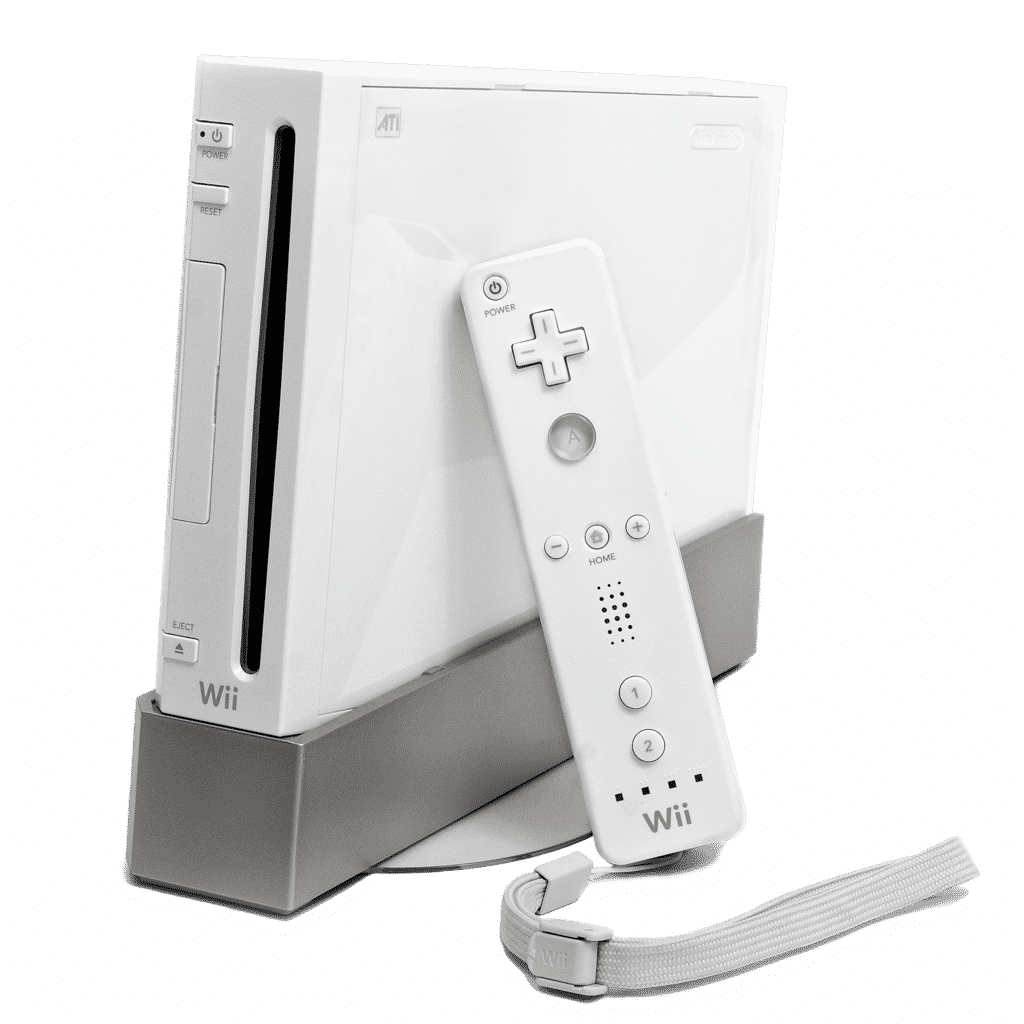
November 2006 in the United States and December of the same year in the rest of the world were the dates chosen by Nintendo to carry out the simultaneous worldwide launch of its revolutionary console, the Nintendo Wii: a mass phenomenon thanks to the magnificent communication campaign of Nintendo and the expectation generated by its new way of playing video games. The price? $249.99.
Nintendo had already returned to its origins in the seventh generation of video game consoles and, if with the Nintendo DS they had launched a perfectly balanced portable console for the time and novel as a whole, with the Wii they were going to loop the loop and bring the same concept to homes around the world: Creativity and balance over power and brute force.
And no, Nintendo Wii was not the most powerful console, far from it, in fact the programmers of the time considered it as a Game Cube 1.5 with a maximum definition of 576i and much lower specifications than those of the PS3 or Xbox 360, the Nintendo Wii played in another league far from wanting to compete for mega hertz and polygons per second. Nintendo focused on the gaming experience and bringing video games to all audiences, regardless of gender or age. They did both things to perfection and in this way, the Kyoto company definitively abandoned the struggles for graphics and power, its consoles would be from this generation practically independent of the competition.
The Nintendo Wii was truly revolutionary in its gaming system, based on the motion sensor technology of its controllers, the Wii Mote. If the Nintendo DS invited us to train our brains with Brain Training, the Wii was presented to the world as the way to play sports, lead a healthy life with video games and enjoy them in a new way. And it was successful, the concept caught on wonderfully among the female audience and adults who had not played again for many years, as well as with all those lifelong players who fantasized about the immersion they promised us.
Never before has it been so easy to give a console to our mothers, aunts or grandmothers. To the classic offer of video games of various genres, Nintendo added an endless number of new control possibilities, new genres, mechanics and healthy living. The Wii became part of our homes, with sports games the stars of family gatherings. Peripherals like the Wii Fit became the star gift of Christmas… Now you could do yoga in your living room… Good.
It is true that the Wii disappointed many players who imagined shooting Nazis in the living room at home, sheltered behind the sofas, as they had seen in advertising campaigns or those who expected to notice the clash of their katanas and lightsabers, something impossible to put into practice. It also disappointed those who were looking for next-gen graphics, their souls fell to their feet as soon as they turned on the console. The friends and beautiful people on the couch that were seen in the commercials were not included either… But the console offered a new world to explore focused on new ways of playing and the highly exploited offline multiplayer:
Because yes, the Nintendo Wii once again brought families and neighbors together: faced with an increasingly isolating online multiplayer, Nintendo decided to have a good time with your loved ones, promoting that facet to infinity. In this way, one day you were with your colleagues playing a Wario, another day with your parents shooting archery and another day playing hide-and-seek with the controller all over your house with 4 beers too many… All true. The Wii was something else, for lifelong gamers there were already other consoles, the Wii only offered us one thing for sure: FUN at low resolution.
From a peripheral designed for the Game Cube, Nintendo had enough vision to create a console with a life and style of its own, creating a perfectly balanced system especially for casual gamers, an end that it popularized by selling more than 101 million consoles, a real madness. considering that Sony and Microsoft sold more than 160 million consoles together, which shows that:
- Many gamers, we choose to acquire the Wii and another console for more classic-style games.
- The Wii scandalously expanded the market for home consoles thanks to its new proposal.
On the other hand, the Wii started another curious trend for Nintendo: the reuse of its games in different generations. The Game Cube having had very few sales, Nintendo not only settled for the Wii being backward compatible with the GC, but also re-released 128-bit Nintendo games adapted to the new controls. In this way, many players were able to meet, enjoy and discover authentic Game Cube games that otherwise would have been forgotten.
What about piracy? Yes, the Wii was also a victim of piracy, with the classic “chip” you could transform your console into a retro entertainment center capable of playing thousands of games, including your naughty backup copies, at a time when most people had a DVD recorder in their homes. As in the other consoles, this possibility was taken into account when purchasing a new console.
As we have seen, the Wii was an unprecedented success for Nintendo, ending as the undisputed winner in the battle between the seventh generation of console machines, a generation in which the classic model represented by Sony and Microsoft faced each other, focused on power and online multiplayer, against Nintendo’s new concept focused on originality and balance. This time the Nintendo model was the one that emerged victorious.
The 7th generation of consoles, legacy and consequences
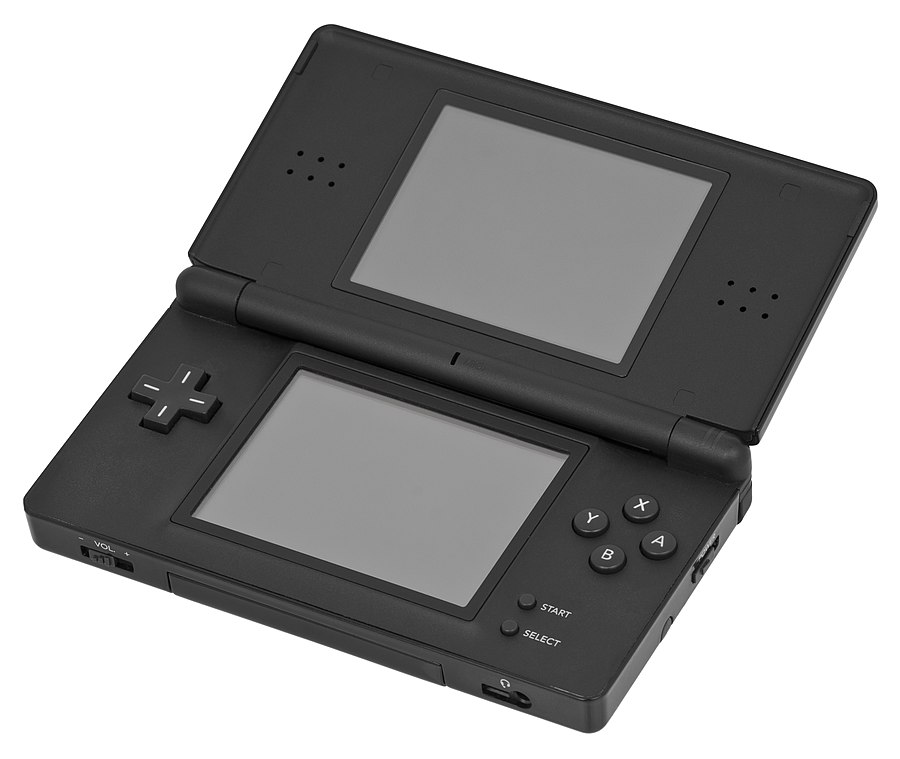
- In the field of portable consoles, Nintendo maintained its perpetual reign by resisting the onslaught of the powerful PSP, thanks to the expansion of the user profile.
- Nintendo expands the player market like never before.
- Having created a new user base focused on casual players, a very high percentage of these players limited themselves to buying 1 or 2 games: Brain Training and Nintendogs basically, that was enough for them. This fact makes the numbers deceive and the sale of titles per console is not the same as what we were used to.
- Nintendo abandons the traditional struggle to launch the most powerful console and focuses on originality and gaming experience.
- Microsoft is definitely presented as a worthy rival to Sony, matching it in sales and performance.
- Sony and Microsoft consolidate the successful model of online multiplayer as a paid service. The traditional offline multiplayer begins its descent with the Wii as the only defender, with all the social consequences that this entails.
- The unstoppable process of selling games by download begins, generating controversy between the conservative defenders of the physical and the progressive online… Boost the cartridge!
- Multimedia becomes a definitive part of home consoles thanks to the integrated online services of the consoles and their power.
Due to the global economic crisis, the seventh generation of video game consoles lasted more years than initially scheduled. For users, this fact did not result in anything negative, since thanks to the architecture of the Xbox 360 and PS3, its features and the mastery that the programmers had achieved, it makes it one of the most and best squeezed generations, with better games. and with less visual difference compared to the next generation.
Today (2020), the Xbox 360 and PS3 are perfectly playable consoles and with real graphic boasts, especially in those games in which human skin is not represented (which is worse graphically). It’s clear that the Xbox One and PS4 have been a huge improvement, but the visual difference between generations is minimal compared to previous generation jumps. In the seventh generation, games as complex in their mechanics as any of the next generation were developed, without a doubt the magnificent good work of Sony and Microsoft in their machines, the main responsible.
Excuse me but I am going to be more clear, leaving aside the Wii that played something else, the XBOX 360 and PS3, have been the best and most exploited consoles of their corresponding generation throughout the history of consoles. Others will say that they have been the best consoles that have ever existed in relation to their time, and quite possibly they will be right. They were two pieces of consoles that were forced to live longer than expected due to the global economic crisis, and they measured up amply.
The public of the 7th gen. of consoles

The audience of the seventh generation of consoles was by far the largest and most diverse in the entire history of video games so far (2020). The Nintendo DS and the Wii joined an entire army of casual gamers of all ages and sexes, who joined the gamers of a lifetime, that generation after generation we were already getting older while the youngest were incorporated. … The perfect Storm. At last, girls were joining video games, taking over the market for laptops and desktops, initiating a change in an industry once focused mainly on men. As we have already said, suddenly our mothers and some grandmothers gave sudoku on the DS, something unheard of and that forever whitened the image of video games. Many of those casual gamers did not buy a console again in subsequent generations, but as we have said, the image of video games definitely improved.
Those belonging to the generation of 8 and 16 bits as a server, whom the PSX and other fifth generation consoles had managed to keep us in the hobby, we were already full-fledged men with work and income of our own. This fact led to a majority of the players having the ability to buy 2, 3 or 4 consoles in the same generation, something that may sound crazy but it translates into being single, and having the PSP and Nintendo DS, plus the Wii. and Xbox 360 or PS3, thus covering both fronts, the casual and the classic. Regarding the games, the same thing happened, we had never had our shelves so full in such a short time, being the generation that sold the most video games in the course of its life (ignoring later).
On the other hand, the millions of players who, generation after generation, only limited themselves to buying the latest version of FIFA or PES and with luck some of Formula 1, remained. Players who dedicated all their leisure time to a single game, something that Today it continues to happen and the Sony console is normally the one chosen.
As you have seen, unlike previous generations of video game consoles, the public for video games became total, the stereotypes that existed were broken and we lifelong gamers witnessed how society went from calling us geeks, to normal people… It was hard for them, but in the end they realized it and joined our passion, video games: entertainment, art and culture on the move.
The games of the seventh generation
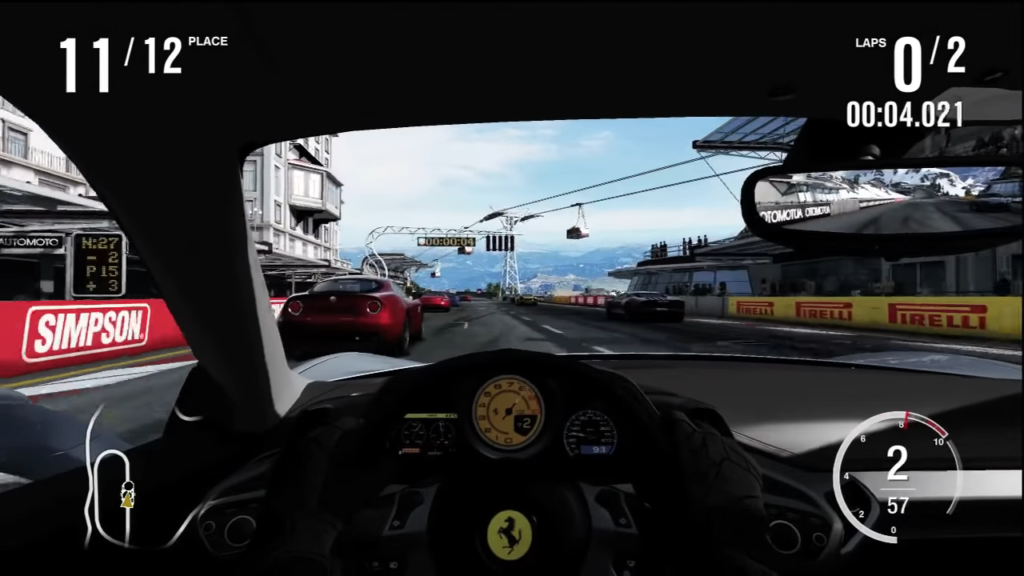
The rivalry between Sony and Microsoft in a multimillion-dollar industry that manages its figures at the stroke of GDP, made the PS3 and XBOX 360 have some of the best catalogs in history, the number of games and sagas that you must play are unmentionable, the industry He put in 100% and gave it his all. As we have already mentioned, forget about old mechanics or flat and simple games, the PS3 and XBOX 360 catalog is based on solid pillars of experience and evolution in terms of software, together with hardware that could handle everything. In this way, we find developed and complex games at the height of the next generation in controls, mechanics and concepts. This seventh generation of consoles can handle everything… Quite a luxury for us. Let’s look at some examples:
The Elder Scrolls V: Skyrim, Grand Theft Auto IV y V, saga Mass Effect, Red Dead Redemption, Portal 2, saga Halo, Fallout 3, Call of Duty 4: Modern Warfare, saga Gears of War, Forza Motorsport, Dead Space, The Witcher 2: Assassins of Kings, saga Dark Souls, FarCry 3, Super Street Fighter IV, XCOM: Enemy Unknown, Left 4 Dead 2, The Last of Us, Persona 5, saga Uncharted, God of War III, LittleBigPlanet, Assassin’s Creed, Killzone 2, Heavy Rain, saga Metal Gear…
Impressive, we had never had such a prolific generation and unlike the previous ones, of games so developed and that offered us so many hours of play individually. For a lover of retro as a server, it is possible that Super Mario World is the best game in history for the aggrandizing power of nostalgia and own feelings / memories, but we must recognize that the assortment of experiences that the seventh generation offered us of consoles was unique.
And yes, I know that I have mixed multiplatforms with PS3 and Xbox 360 exclusivities, but in practice, from the point of view of 2020 and given what the Wii offered us, they are the same proposal/console: Both consoles They offered us elaborate, adult game experiences that were very focused on online multiplayer, a new world that many of us discovered in this generation.
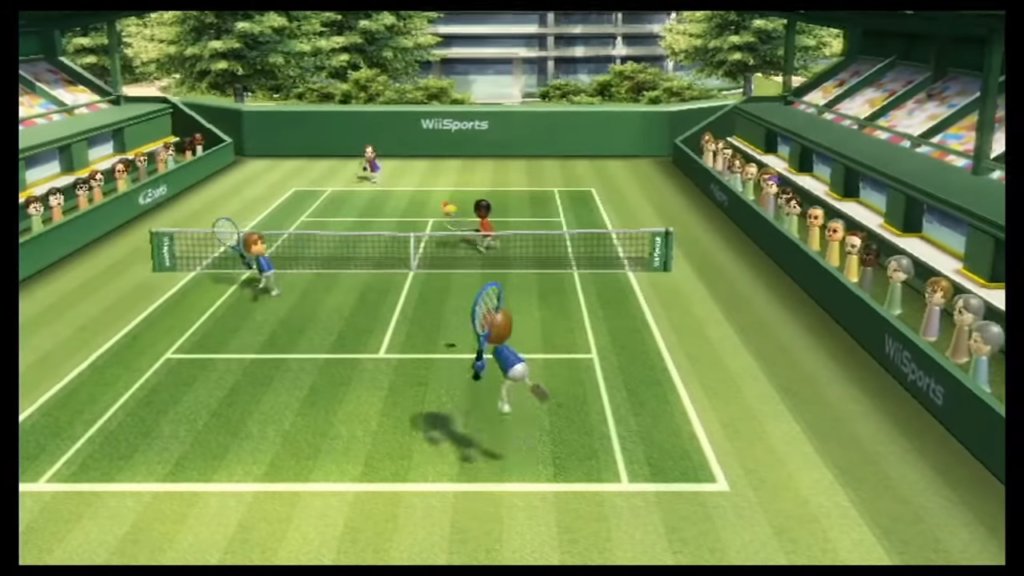
The Nintendo Wii was quite the opposite, it is true that it has jewels at the highest level, with special relevance to the games of the Nintendo universe, but its catalog was mainly focused on all those millions of players who wanted to experience new proposals and ways of play. The result? One of the best consoles to play with family and friends (Gin Tonic in hand), but a magnificent decorative vase for classic players looking for something more… And let me explain:
Yes, the Wii fulfilled its mission perfectly, but lifelong gamers who bought it as the first option, verified in a short time, how it did not measure up as a console for those of the old school. Enjoying Nintendo games was a luxury and group laughter was amazing, but when we wanted something more serious, deeper, the offer was very limited compared to the competition. The solution was inevitably to acquire a 360 or PS3 for this type of player as a server did (2nd hand in my case).
Another curious fact was to verify how among the immense catalog of the Wii destined for its millions of users, only Nintendo games were clearly a bestseller, in fact, many studies commented that it was not profitable for them to publish their games on the Wii console. Nintendo and in parallel, the most powerful third parties progressively stopped bringing their successes to the Nintendo console (one more generation). Actually, it was normal for this to happen, no matter how many millions of units the Wii had:
- The Wii wasn’t powerful enough to properly port the hits of the PS3 and Xbox 360.
- Players who had a Wii and a 360 or PS3 would choose the best version when playing multiplatform.
- For casual players, Wii Sports was enough to calm their cravings, they didn’t buy more titles.
- Nintendo squeezed its console 100%, being a guarantee of quality. When in doubt, buying a game developed by Nintendo was a guarantee of quality to the detriment of third parties.
- Quality was also what many third parties lacked, which limited themselves to releasing low-quality games shielded by the new control or the age of their target, something that lowered the bar and image of the console’s catalog.
- A large part of the public that did play Wii regularly was very young, so they did not have the economic capacity to buy their own titles, unlike the competition.
All this caused that in the long run, the extensive catalog of the Wii has a life of its own, both for the good and for the bad but equally full of jewels… Let’s check it out:
Super Mario Galaxy 1 and 2, Xenoblade Chronicles, Metroid saga, Super Smash Bros. Brawl, The Legend of Zelda: Twilight Princess, The Legend of Zelda: Skyward Sword, Okami, Resident Evil 4 Wii Edition, New Super Mario Bros. Wii, Donkey Kong Country Returns, Monster Hunter Tri, Punch-Out!!, No More Heroes, Wario Land: The Shake Dimension, Mario Kart Wii, Wii Sports Resort, Trauma Center: New Blood…
The result is a perfectly playable catalog today, in the same way that the PS3 and Xbox 360 hold up wonderfully well in 2020, the Wii also holds up for all those casual gamers or younger Nintendo fans. There is no doubt that Mario’s company knew how to take 100% advantage of a new way of playing, offering us hundreds of extremely interesting proposals, although many of them have not gone beyond the Wii environment to settle in the structure and foundations of video games. It is true that Nintendo has followed in the footsteps set by the Wii in the rest of its home consoles, which is no small thing.
Collect consoles of the 7th generation
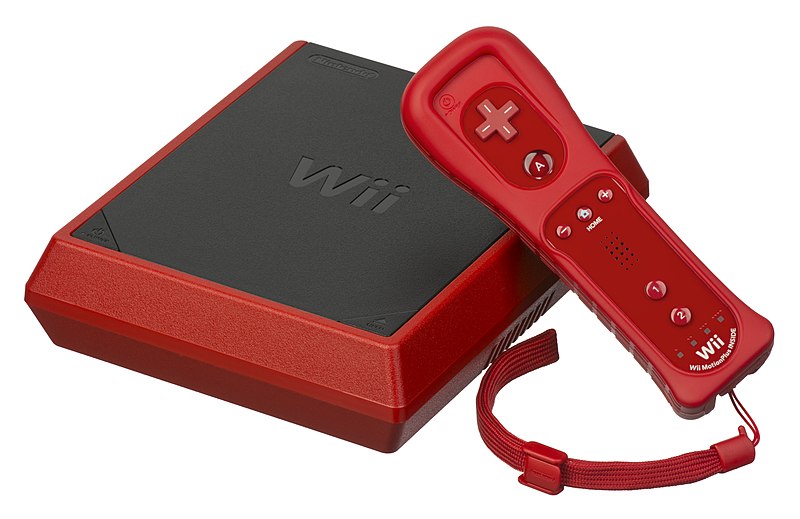
Do you want to collect seventh generation consoles? Do you want to collect the Sony PS3? The Xbox 360? Want to start your Nintendo Wii collection? Well CONGRATULATIONS, you’re in luck, it couldn’t be easier, it’s the perfect time to start collecting any system of the seventh generation of video game consoles (2020).
The fact that they are such recent consoles means that very few people value them as valid consoles compared to their successors, which is why the price of a PS3, Xbox 360 and Wii is ridiculous, as well as that of their games. It is possible that if you are lovers of retro, surely you do not even consider these consoles as retro systems, but the fact that they have had a long life does not mean that they are not retro. In fact, they are already 15 years old!
So yes, the seventh generation of video game consoles will be considered “vintage” in a few years, so now that there is plenty, we strongly recommend you acquire your systems and gradually build up a good catalog of exclusivities. In addition, one of the great advantages of this generation, in addition to the huge existing second-hand market, is that most of its titles are perfectly playable today, having many jewels in its catalog that are essential to understand the evolution of History. of video games.
That said, don’t hesitate, I know it may not be attractive initially to collect 7th generation systems, but what you spend today, you will save tomorrow.
Buy consoles of the seventh generation

Currently (2021), buying any commercial console of the seventh generation of consoles is extremely cheap, so if you still do not have a Nintendo DS, PSP, PS3, Xbox 360 or Wii, the sooner you buy it, the more money you will save. Due to the millions and millions of units sold, you can find any of these consoles in second-hand stores, specialized websites, sales applications, traces…
Leaving collectors aside, regarding the PS3 and XBOX 360, they are consoles from the seventh generation of consoles that can still give a lot of play to younger players, players who only want to play a game from time to time or those who They just don’t want to spend a lot of money. If you are lucky enough to have a second home, these are the perfect consoles for a weekend and for those of us who, as a server, are lovers of Retro and pay little attention to the latest releases, surely there are many games for these consoles to which we have not yet thrown the glove.
There are many people who are usually 1 or 2 generations behind, and it’s not silly: You save a lot of money by buying second-hand and you know exactly what games to spend your time on, millions of people have already done it for you before, so you’re oversafe. If this is your case, you can now take the step from the PS2 to the PS3 or Xbox 360, the Xbox 360 being the one we recommend due to its cheap prices, the Xbox 360 is one of the cheapest consoles on the market as you can see in the following link with updated prices.
And the Wii? The Wii is a separate case, if you are collectors owning it is mandatory, the Nintendo console made history. If you are not a collector, its graphics may put you off as well as its childlike touch, but don’t be fooled, the Wii continues to give a lot of play. Really, with a small investment we can convert the signal of our Nintendo Wii to 1080p, with which it earns a lot thanks to its nice graphics, which will now be well defined. With this little device, we suddenly have a huge catalog of 1080p video games, with a console that is at ridiculous prices, as well as its games right now (2021). For piques with the couple, gatherings of friends and family, the Wii continues to be one of the best consoles thanks to its accessibility and it goes without saying that for those who are starting out in this hobby, the little ones, the Nintendo Wii is still the console PERFECT.
eye! A little thing before finishing this section, be careful about portable consoles if you buy a PSP, today the batteries are terrible, so make sure before you buy it. And if you’ve come this far, don’t hesitate to follow our Twitter, much more informal and updated daily, I’m sure you’ll like it!
FAQ Seventh generation video game consoles
2005 on desktop.
Xbox 360.
$299.99 the cheapest.
In United States.
The definitive implementation of online multiplayer and downloadable games.
The Nintendo Wii, with 101 million units sold.
There are three: Nintendo, Sony and Microsoft.
DVD, Blu Ray Disc and digital downloads.
Thanks to the different approaches of the brands, to ALL audiences, without exception.
Yes, those of PS3 and Xbox 360 brought hours and hours of intense debates.
Theoretically the PS3, but the Xbox 360 didn’t let me show it.
Xbox 360.
Yes, the shadow of the PlayStation 2 was very long.
External sources and links
- console graphics resources: https://commons.wikimedia.org/wiki/User:Evan-Amos


